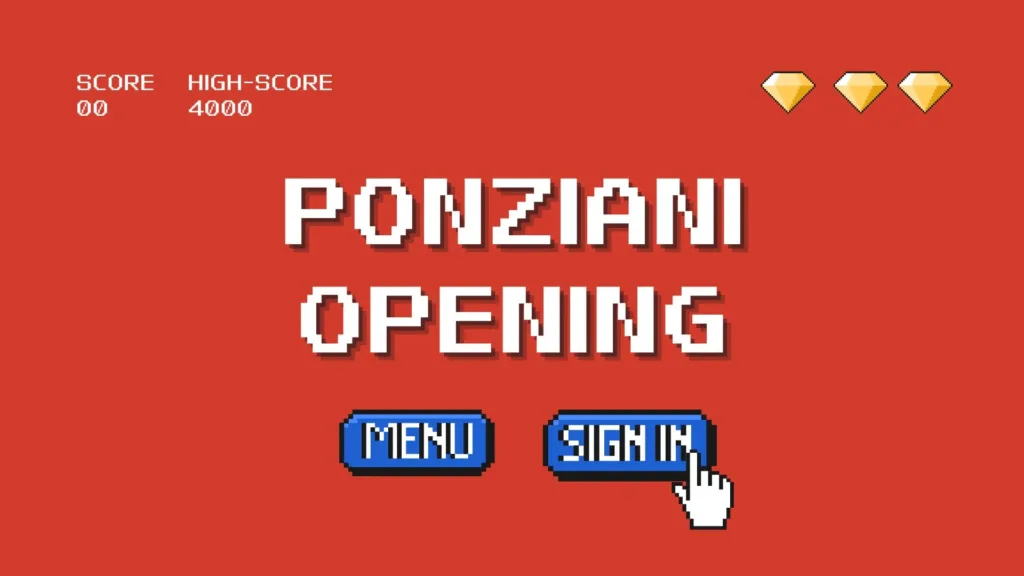The Ponziani Opening is one of the most time-honored choices in chess, appearing as early as the 18th century. Though less common than the Italian Game or the Ruy Lopez, it has always fascinated players with its mixture of classical principles and hidden tactical traps. Its name comes from Domenico Lorenzo Ponziani, an Italian priest and early chess theoretician, who left a lasting mark on opening theory by promoting this system.
Unlike the rapid pawn thrusts of the Scotch Game, the Ponziani begins slowly, with a quiet pawn move that masks dangerous central ambitions.
How the Ponziani Starts
The defining moves are:
1.e4 e5 2.Nf3 Nc6 3.c3
At first glance, White’s third move looks modest. In reality, it prepares the central advance d4, aiming to build a broad pawn center and free space for development. Black, however, has multiple replies that lead to different kinds of battles.
Strategic Goals
White’s setup in the Ponziani rests on three main pillars:
- Central dominance: The c3–d4 plan strikes at Black’s e5 pawn and claims space.
- Smooth development: The opening clears paths for bishops and helps White castle quickly.
- Flexibility: Depending on Black’s response, White can steer the game into sharp tactical waters or calmer positional channels.
Key Responses from Black
1. The Active Knight: 3…Nf6
One of the most principled replies is 3…Nf6, directly challenging White. Play may continue:
1.e4 e5 2.Nf3 Nc6 3.c3 Nf6 4.d4 Nxe4 5.d5 Ne7 6.Nxe5 Ng6
From here, White can choose between positional play with Qd4 leading to an endgame, exchanging the knight, or sharper continuations with Qf3. In either case, White holds enough activity to justify the early pawn push.
2. The Central Break: 3…d5
Another natural counter is to strike immediately in the middle:
1.e4 e5 2.Nf3 Nc6 3.c3 d5
This is the top choice by computer. White often answers with 4.Qa4, pressuring the knight and pawn. Black may respond cautiously with …f6, or enter sharper lines with …Bd7 followed by tactical complications. White typically retains attacking chances, while Black must prove that any pawn sacrifice provides sufficient activity.
3. The Solid Setup: 3…d6
For players who prefer stability, 3…d6 is a safe alternative, but it gives White the center.
After 4.d4 Be7, White develops quietly with moves like Bd3, 0-0, Nbd2, and often maneuvers the knight toward g3 to prepare f4. The game tends to be slower, but White still keeps the initiative.
Strengths and Drawbacks
Advantages for White:
- Builds a strong central presence.
- Offers flexibility in pawn structures and piece development.
- Functions as a surprise weapon since many opponents are less prepared.
Potential Liabilities:
- The move c3 delays the queen’s knight from developing naturally to c3.
- Black has dynamic counterattacks if White isn’t precise, especially after lines like 3…Nf6.
Illustrative Example
Here’s a sample line in the 3…Nf6 variation:
The Ponziani in Modern Play
Though it appears less frequently in top-level tournaments today, the Ponziani is far from obsolete. Club players especially benefit from its blend of classical structure and hidden tactics, often catching opponents off guard. With proper study of its main lines and typical traps, it can become a dangerous surprise weapon.
Main Line
Winning a Queen in 10 moves

I’m Xuan Binh, the founder of Attacking Chess, and the Deputy Head of Communications at the Vietnam Chess Federation (VCF). My chess.com and lichess rating is above 2300. Send me a challenge or message via Lichess. Follow me on Twitter (X) or Facebook.






